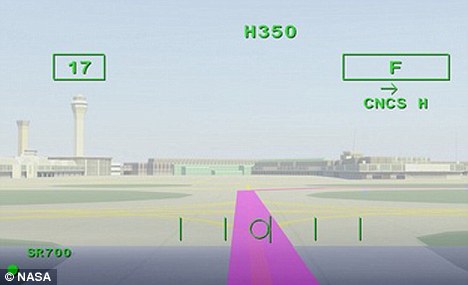 |
| Prototype: The glasses, now being offered commercially, track the user's eye-movements to overlay information |
NASA has created augmented reality goggles which could soon be available to airline pilots and help them 'see' through fog.
The
goggles can track a pilot's head-movements and overlay runways, towers
and potentially other airplanes over their view - an invaluable tool
when fog rolls down across an airport.
Even
as the pilot turns his head, the goggles can react in real-time to
ensure the virtual representations always stay in the same place as
their real-world counterparts.
Trey
Arthur, an electronics engineer at NASA
Langley Research Center in Virginia, told InnovationNewsDaily: 'If
pilots are not familiar with the airport, they have to stop and
pull out maps.
'This display, in the new world
where these routes are going to be digital, can tell them what taxiway
they’re on, where they need to go, where they’re headed, and how well
they’re tracking the runway’s center line.'
 |
| Through the fog: An example of how the NASA glasses can use augmented reality to see through adverse weather conditions |


No comments:
Post a Comment